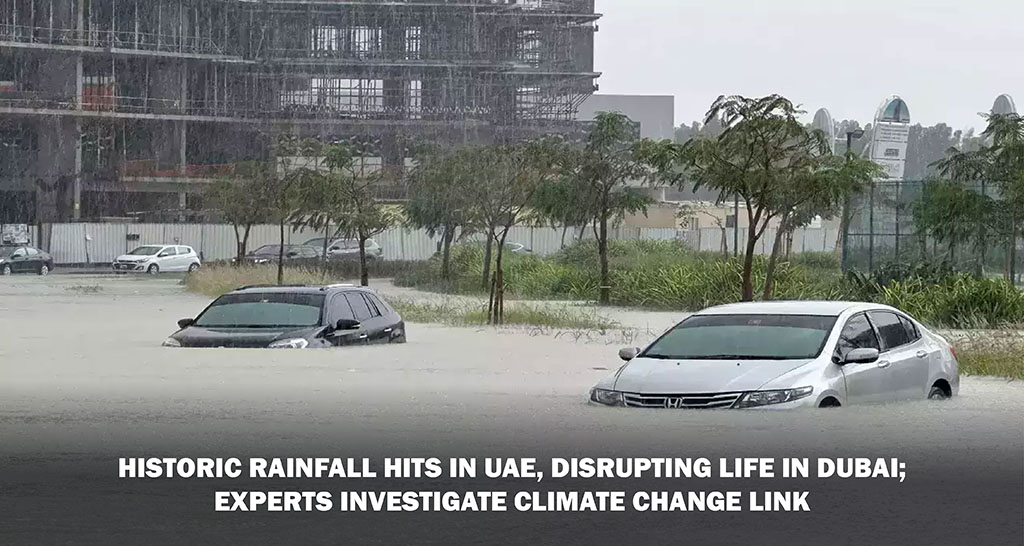The United Arab Emirates (UAE) experienced record-breaking rainfall in an unprecedented weather event. This brought life in Dubai to a standstill and made people start worrying about climate change in extreme weather phenomena.
On the night of the 15th of April 2024, a severe thunderstorm unleashed a deluge on Dubai, shattering rainfall records dating back to 1949. The downpour, which typically takes the city a year and a half to accumulate, was a stark departure from its usual dry climate. The storm’s ferocity wreaked havoc on homes, businesses, and infrastructure, tragically claiming one life and plunging the city into chaos.
Dubai, which usually has a dry climate, experienced an incredible 142 millimeters of rain in just a few hours. This amount of rain equals what the city typically gets in a year and a half. The intensity of the rainfall disrupted air travel, forcing flight diversions and delays and briefly suspending operations at Dubai International Airport, one of the world’s busiest hubs.
After the heavy rain, the streets were flooded, cars were left behind, and public places were swamped. Residents and visitors described scenes of “absolute carnage” at the airport. They said there was total disorder, with many people stuck and transportation systems completely stopped. The storm flooded shopping centers like Dubai Mall and Mall of the Emirates. This shows how much the storm affected many places.
Beyond Dubai, other regions of the UAE also experienced unprecedented rainfall. Al Ain witnessed a record-breaking 254 millimeters, and Fujairah received 145 millimeters of rainfall. The severity of the storm extended beyond the UAE, affecting neighboring Oman, where 18 people lost their lives, including school children swept away in floodwaters.
Meteorologists say the heavy rainfall is due to a storm passing through the Arabian Peninsula and Gulf of Oman. Additionally, they used a technique called cloud seeding, where they put salt mixtures into clouds to make them produce rain. This may have contributed to the intensity of the rainfall, as there were reports of several cloud-seeding flights before the rain started.
Experts say natural changes in the climate and efforts like cloud-seeding contribute to extreme weather. However, some experts think that climate change could make these events even worse. Rising global temperatures lead to increased atmospheric moisture, intensifying precipitation and heightening the risk of flooding. The UAE, experiencing a temperature increase of nearly 1.5 degrees Celsius in the past 60 years, underscores the urgency of addressing climate change and its potential impact on weather patterns.
Despite challenges in directly attributing individual weather events to climate change, the unprecedented rainfall in the UAE makes people think more about how the environment affects extreme weather everywhere. This event is making everyone look closer at how environmental factors can lead to extreme weather worldwide. Communities are dealing with the aftermath of the storm, trying to recover. Now, people are focusing on strengthening these places and finding ways to lessen the impact of climate change on areas that are easily affected.

